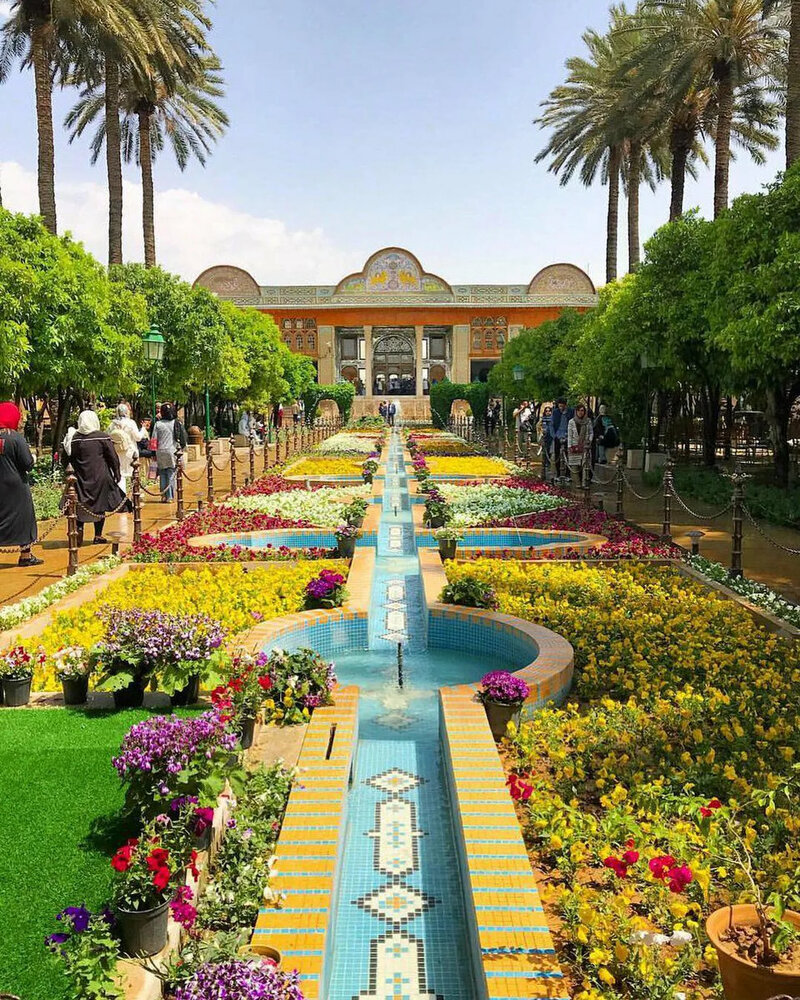Bagh-e Narenjestan: One of the smallest yet most visited gardens of Shiraz

TEHRAN - Named after the bitter oranges that line the central courtyard, Bagh-e Narenjestan is one of the brilliantly manicured gardens of Shiraz. Bitter oranges are “Narenj” in Persian.
Though it’s one of the smallest in the southern Iranian city, the garden is a top tourism destination both for domestic and international sightseers.
The garden is home to an opulently decorated pavilion which is called Naranjestan-e Ghavam; a complex owned by one of Shiraz’s wealthiest Qajar-era families.
The pavilion’s mirrored entrance hall opens onto rooms covered in a myriad of intricate tiles, inlaid wooden panels and stained-glass windows.
Particularly noteworthy are the ceilings of the upstairs rooms, painted with European-style motifs, including Alpine churches and busty German frauleins, according to Lonely Planet.
Built for the wealthy and powerful Mohammad Ali Khan Qavam al-Molk between 1879 and 1886 as the buruni (public reception area) of his family home, the pavilion is connected to the Khan-e Zinat ol-Molk, which housed the family’s andaruni (private quarters), by an underground passage (not open to the public).
The basement of the pavilion houses an archaeological collection put together by Arthur Upham Pope, an American scholar who taught at the Asia Institute in Shiraz between 1969 and 1979. There is also an excellent selection of handicrafts for sale in the basement, including miniatures painted on camel bone and tiles inspired by antique designs.
Those looking to take part in the current craze for dressing up in Qajar-era costume can do so at the booth in the corner of the courtyard. Receiving the last rays of the day’s sun, the teahouse here is a good spot to enjoy the light fading over the garden wall; it also sells delicate tinctures of rose- and pomegranate-flavored jellies.
Shiraz is home to dozens of magnificent buildings, historical sites and scenic landscapes. It was literally the capital of Persia during the Zand dynasty from 1751 to 1794.
AFM/MG
Leave a Comment